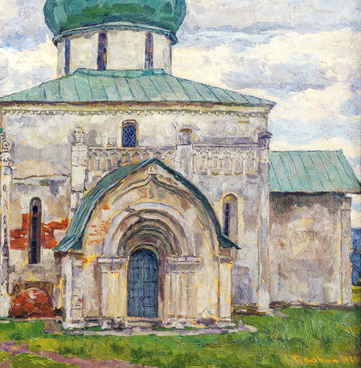A Leningrad artist, skilled landscapist and portraitist who painted canvases on the themes of history and modernity, Georgy Pavlovich Tatarnikov (1914–1971) was born in Saratov. This city has given birth to many outstanding Russian artists.
In the mid-1930s, he came to Leningrad. There, he studied under Alexander Dmitrievich Zaytsev and Boris Alexandrovich Fogel, who taught in the art studio of the Gorky Palace of Culture. Georgy Tatarnikov came to the studio for five years.
In 1939, Tatarnikov became one of the participants of the All-Union Art Exhibition. That year, he was also called up for military service. Georgy Tatarnikov fought in the Winter War, and then in the Great Patriotic War.
The front-line artist spent seven years serving in the Baltic Fleet. In the post-war years, Georgy Tatarnikov showed himself as an outstanding landscape painter, who continued the traditions of Western European and Russian art.
Tatarnikov was a true self-taught genius: he did not receive a systematic professional education, but achieved great results in art, and most importantly, developed his own, unique, emotional pictorial language.
He was clearly influenced by the style of the Barbizon school and Impressionists. Georgy Tatarnikov loved painting clouds, water surfaces, twisting coastlines, fogs, flying birds, outlines of architecture, winding streets, yacht sails — everything that French painting of the 19th century lived by and which the official Russian art of his time abandoned.
The miniatures that Georgy Pavlovich Tatarnikov created en plein air are true masterpieces, pearls of the artistic interpretation of nature motifs. This applies primarily to his Volga and Crimea views.
One of such masterpieces is the painting “Volga. A Fresh Day”. The artist painted it after the war, in 1949. In this artwork, Tatarnikov turned to the theme of his native Volga, the vast waterfront areas. In a small-format work, he depicted a steamboat against the background of the smooth outlines of a steep shore.
Georgy Tatarnikov was an
artist of rare talent and a fine draftsman, observant and attentive to details,
with a tenacious eye. The artist skillfully worked with both a pencil and a
brush. He was able to convey the environment, the air, and the changing life.


